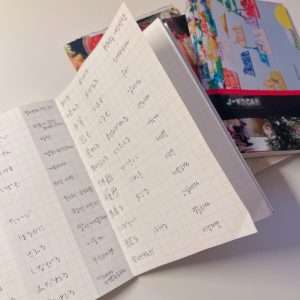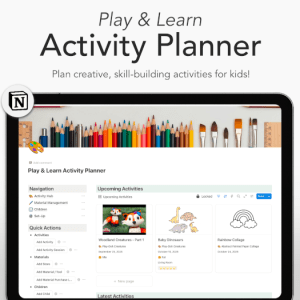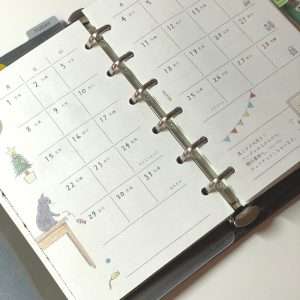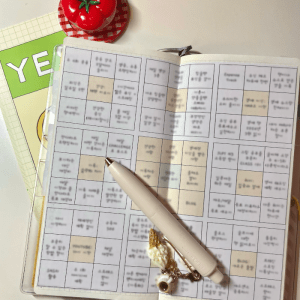JLPT Test Results: How I Passed JLPT N1
The Japanese Language Proficiency Test (JLPT) is a major milestone for many learners of Japanese worldwide, and the December session each year offers a critical chance to demonstrate advanced language skills. It also became a personal milestone for me, marking the end of months of juggling full-time work and structured study sessions. I took the exam in December 2024 at the highest level (N1) and am thrilled to report that I achieved a total score of 149 out of 180. This post aims to share my JLPT results 2024 story in detail, touching on the delayed score release date, my breakdown of points in each section, and various tips for those looking to secure their own JLPT N1 passing score.
If you’d like to know more about how I initially got started with the JLPT and my broader language-learning background, feel free to explore my other posts at the following link: JLPT Study Tips.
For a more in-depth account of my test-day experience itself—complete with insights on the registration process, question formatting, and the overall atmosphere—you can check out my previous post here:
JLPT Exam Experience: What to Expect & Tips
In this article, I’ll focus on what happened after the December 2024 exam, the surprise delay in publishing results, and the strategies that enabled me to surpass my usual practice test scores. I hope these reflections and JLPT N1 study tips will be helpful if you’re planning to take (or retake) the exam in the future.
Table of Contents
- What is the JLPT N1 Level?
- How Fluent is JLPT N1?
- How Long Does It Take to Pass JLPT N1?
- How Much Does JLPT N1 Cost?
- Delayed December 2024 Score Release Date
- My Score Breakdown and Section Insights
- Coping with Imperfect Audio
- Essential JLPT Study Tips
- Reflections on the December 2024 JLPT Experience
- What’s Next?
What is the JLPT N1 Level?
JLPT N1 is the highest level of the Japanese-Language Proficiency Test (JLPT) and measures advanced Japanese proficiency. I also felt like the “final boss” of formal Japanese exams! It evaluates a test-taker’s ability to understand complex written and spoken Japanese, including academic texts, professional documents, and advanced conversations. Those who pass N1 can typically read newspapers, business reports, and literary works with minimal difficulty. While the test primarily focuses on reading and listening comprehension, it does not assess speaking or writing skills directly.
How Fluent is JLPT N1?
Passing JLPT N1 demonstrates a high level of Japanese comprehension, but it does not guarantee fluency in everyday conversation. Many N1 holders can read formal documents, advanced academic materials, and news articles, as well as follow complex discussions in podcasts and lectures. However, achieving true fluency depends on regular speaking and writing practice outside of exam preparation.
From my experience, passing JLPT N1 takes your Japanese skills to the next level. It opens up more opportunities to broaden your language abilities beyond structured study. After reaching N1, I was finally able to pick up Japanese books I had been wanting to read and understand podcasts that previously felt out of reach. The exam gave me the foundation I needed to continue improving naturally through real-world exposure.
How Long Does It Take to Pass JLPT N1?
The time required to pass JLPT N1 varies depending on prior experience and study habits. For absolute beginners, it typically takes 2,500 to 3,000 hours of study. Those with prior knowledge of kanji (e.g., Chinese or Korean learners) may reach N1 faster due to their familiarity with characters.
For me, it took 1 year and 6 months of focused study to pass N1. My preparation included consistent vocabulary review, grammar drills, listening practice, and reading advanced materials. The journey required discipline and immersion, but the results were rewarding.
How Much Does JLPT N1 Cost?
The cost of taking the JLPT N1 varies depending on the country and test location. In the United States, the exam fee is typically $100-$120 USD, while in Japan, it costs around ¥7,500. Other countries may have different pricing based on administrative costs, currency exchange rates, and local testing policies.
If you need to travel to take the exam, consider transportation and accommodation costs, as not all states in the U.S. offer the JLPT. Some test-takers may need to book flights or hotels, which can add significantly to the overall expense. Always check the official JLPT website or the local test administrator’s page for exact fees and available test centers.
Delayed December 2024 Score Release Date
One of the most nerve-wracking parts of the entire JLPT process was the wait for the December 2024 results. Originally, the JLPT December 2024 score release date was scheduled for around January 21st. Like many test-takers, I was counting down the days to check my scores online. However, an unexpected delay pushed the official release to January 31st at 10:00 AM JST.
Those extra days might not sound like much, but they felt like an eternity when all I wanted was to see whether or not I had passed. The uncertainty gnawed at me, especially since N1 is famously challenging, and I wasn’t 100% sure how I’d done on the listening section. Nevertheless, I tried to remain productive in that limbo period. I reviewed grammar points, listened to podcasts, and kept my vocabulary fresh—just in case I needed to gear up for another attempt in the summer.
When January 31st finally arrived, I logged into the official results portal right at 10:00 AM JST. My eyes quickly scrolled to the total score: 149 out of 180. I’d done it. Relief and excitement hit me in equal measure. The wait had been worth it, and in that moment, I felt immense gratitude for the countless hours I’d devoted to study.
My Score Breakdown and Section Insights
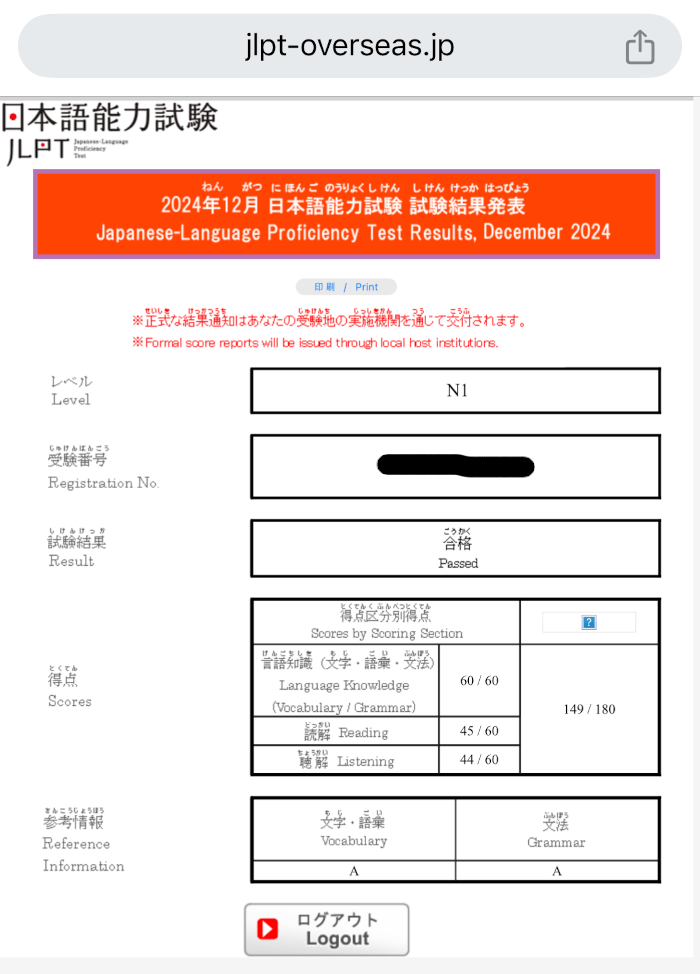
While the total was 149 out of 180, the section-by-section results gave me a clearer picture of my strengths and weaknesses:
- Vocabulary & Grammar: 60/60
- Reading: 45/60
- Listening: 44/60
Seeing a perfect score in Vocabulary/Grammar was a genuine delight. I’d spent significant time on advanced grammar concepts, intricate kanji compounds, and subtle nuances between near-synonyms. My approach included reading authentic Japanese materials such as news articles, short stories, and even academic essays, then systematically noting down unfamiliar words and grammar points. The fact that I didn’t miss a single question in this section surpassed my expectations (YAY!).
Reading was more of a mixed bag. While 45/60 is still respectable, I knew that time management could be a challenge with the dense passages at N1. Some texts contain highly specialized vocabulary or complex sentence structures. Skimming effectively and parsing key information quickly was critical, but I still felt pressured by the clock near the end.
Listening posed the biggest test-day hurdle. Even though I’d prepared extensively with podcasts, TV programs, and practice test audio, the exam hall’s acoustics weren’t ideal. Echoes, distance from the speakers, or minor ambient noises can all interfere with clarity. Still, 44/60 indicates that my practice paid off, and I managed to maintain enough focus to catch the main ideas and details required.
Coping with Imperfect Audio
Because listening was the toughest challenge for me, I’d like to emphasize how to cope with the less-than-perfect audio that can occur at some test sites. Not everyone experiences this issue, but large rooms or suboptimal speaker placement sometimes create echoes that obscure parts of the dialogue or monologue. Here’s what I did to prepare, and how you might handle similar circumstances:
- Practice With Noise
I occasionally set up listening drills in a room with mild background chatter or played the audio through speakers instead of headphones to simulate less controlled environments. - Pause and Summarize
Every so often, I’d pause a podcast or news broadcast and try to recap what I’d heard. This forced me to extract crucial points and reconstruct meaning from partial information—a skill that becomes vital if the audio is not entirely clear. - Context Clues and Key Words
If you miss a sentence or phrase, focusing on the surrounding words can help you infer the missing piece. In many JLPT listening questions, the key to the correct answer lies in grasping the overall context or a single pivotal phrase. - Stay Calm
I remember panicking after missing a key line—and that moment threw me off for the next few questions. It’s easy for one missed segment to snowball into confusion, but it’s crucial to stay calm and trust your preparation.
For a deeper look at what it was like dealing with audio issues in an actual test setting, check out my dedicated post covering the exam day:
JLPT Exam Experience: What to Expect & Tips
If you want more guidance on refining your listening in general—beyond just coping with suboptimal audio—take a look at my strategies and resource recommendations in this post:
How to Improve JLPT Listening
Essential JLPT Study Tips
Over time, I’ve discovered that the path to a strong JLPT N1 passing score involves balancing multiple forms of practice and consistent effort. Below is a list of advice that helped me reach 149/180. The headings are bolded (as requested), but the paragraphs remain unbolded.
Establish a Balanced Study Routine
Commit to steady progress rather than bursts of cramming. I used my Hobonichi Weeks to plan out how I’d spend 30 focused minutes each morning before getting ready, and sticking to that routine made all the difference.
Incorporate Authentic Materials
Textbooks and JLPT-specific drills are important, but don’t underestimate real-world Japanese content. I often played Japanese YouTube videos in the morning while getting ready for work—just having the language in the background helped train my ears naturally.
Use Spaced Repetition for Vocabulary
Whether through flashcard apps, spaced repetition helps you remember vocabs over the long term. Reviewing regularly is essential at the advanced level, where sheer volume can be overwhelming.
Practice Timed Reading
For the reading section, timing is crucial. Use practice tests or set a timer when reading lengthy articles. Early on, I used up too much time on the first passages and rushed the high-point questions at the end. After that, I practiced better pacing and skimming.
Focus on Grammar Nuances
The N1 exam often tests subtle grammar distinctions. A single particle or slight change in phrasing can alter the entire meaning of a sentence. Pay extra attention to areas where synonyms or similar grammar patterns might trip you up.
Simulate Test Listening Conditions
As mentioned, try using speakers in an open space or playing audio at varying volume levels to mimic less-than-ideal environments. This helps you build resilience for test day surprises. I also made a habit of listening to Japanese content without earbuds—real-world background noise helped me adjust to unclear audio on test day.
Track Your Mistakes
Keep a log of errors from practice tests, identifying patterns in your weaknesses. If you consistently miss reading questions involving statistical data, for example, you’ll know to practice deciphering graphs and tables in Japanese.
Stay Motivated
It’s easy to lose steam when studying for such a tough exam. Celebrate small wins—like retaining new words. Rewards, however small, can keep your spirits high.
Reflections on the December 2024 JLPT Experience
If you’re curious about the challenges I faced during the JLPT, including test environment conditions, exam day tips, and handling the listening section, check out my JLPT Exam Experience: What to Expect & Tips post. There, I share insights on managing distractions, the importance of arriving early, and dealing with the audio setup. The December exam was tough—advanced reading passages and imperfect audio made me second-guess a few answers, and the delayed results only added to the anticipation. But when I finally saw my 149/180 score, I felt both relief and motivation to continue deepening my Japanese learning journey.
What’s Next?
Passing the JLPT N1 doesn’t mark the end of the road for learning Japanese. In fact, it feels like the beginning of a more specialized journey. Having proven I can tackle advanced reading, grammar, and listening, I’m eager to explore topics and fields that interest me—ranging from literature to technology—in Japanese.
For anyone else who has just passed or is aiming to pass in the future, consider setting new goals to maintain momentum. Perhaps you’d like to try reading classic Japanese novels or attempt to write articles or blog posts in Japanese. Some people even move on to professional language certifications, translation/interpretation courses, or specialized business communication training.
On my own blog, I plan to continue posting helpful language tips, resources, and reflection pieces. There’s always something new to learn, and teaching or sharing with others is a great way to deepen my own understanding. If you’re interested in seeing more of my study journey and creative endeavors, feel free to visit: JLPT Study Tips
Conclusion
My JLPT journey ended on a high note with a 149/180 score, making the long wait for results worthwhile. The effort put into advanced vocabulary drills, complex reading passages, and daily listening practice paid off, reinforcing the importance of consistent, structured study over last-minute cramming. While exam conditions aren’t always ideal—especially with unpredictable audio quality—being flexible and well-prepared makes a huge difference. If you’re preparing for the JLPT, focus on spaced repetition, grammar nuances, and real-world Japanese exposure to build lasting proficiency. I hope these experiences, insights, and JLPT N1 study tips help guide you toward your own success. Good luck on your journey, and thanks for reading!
📖 Must-Read JLPT Study Tips & Strategies
- JLPT Test Results: How I Passed JLPT N1
- What to Expect on JLPT Exam Day: My Experience & Helpful Tips
- JLPT Study Guide: Last-Minute Preparation Tips for Success
- 5 JLPT Study Tips: How to Stay Motivated and Beat Burnout
- Improve JLPT Grammar Score: The Power of Reviewing Mistakes
- How to Improve JLPT Listening: Top Strategies & Tips
- Why I Chose the JLPT: My Journey to Learning Japanese
📖 Explore More JLPT Study Tips
Looking for more ways to improve your JLPT study routine? Check out all my JLPT Study Tips for in-depth strategies, exam preparation advice, and motivation!







